Animal Learning Games for Kids: Fun and Educational Activities
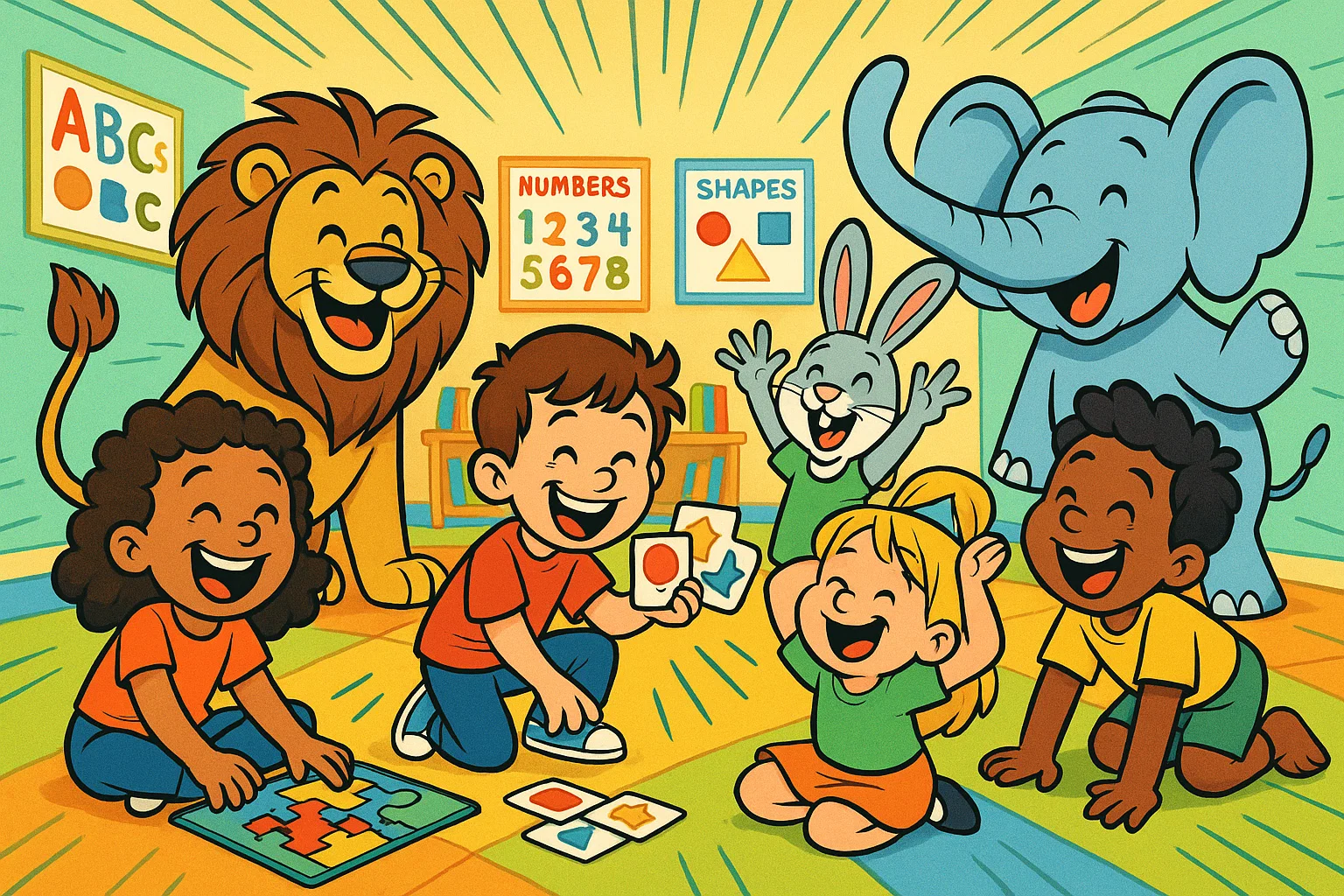
Discovering the world of creatures is a journey of endless wonder for children. Their natural curiosity about creatures big and small, from a tiny snail to a towering giraffe, makes nature-themed games and learning activities incredibly effective. These activities go beyond entertainment—they stimulate a child’s mind, strengthen motor skills, and foster a lifelong love of learning. Whether it’s through interactive digital platforms or classic outdoor games, these activities provide a delightful and engaging way to explore the natural world.
Educational games centered around nature help children develop critical skills without even realizing they’re learning. By incorporating playful elements like matching, sorting, and imaginative play, these activities can boost memory, sharpen problem-solving, and build emotional connections to the natural world. From simple puzzles and matching games to elaborate role-playing adventures, a wide variety of approaches can turn playtime into a valuable learning experience.
Benefits of Animal Learning Games
The benefits of incorporating educational nature games into a child’s life are vast and extend beyond simple knowledge acquisition. They are a holistic approach to development, touching on cognitive, social, and physical domains. Research in guided play suggests that children who engage in playful, scaffolded learning tend to be more engaged and learn better than in unstructured settings.
Cognitive and Memory Development
Nature-themed puzzles, matching games, and riddles are fantastic for a child’s cognitive development. For instance, a matching activity where a child pairs a picture of a cow with its sound helps them build connections and strengthen their memory. A classic memory card game with animal pictures challenges children to remember positions and visual patterns. Similarly, rhyming riddles and guessing games about a specific creature’s diet type or habitat, such as, “I’m a big, striped cat who loves to prowl, what am I?”, sharpen their problem-solving skills and critical thinking.
Social and Emotional Skills
Interactive games like creature charades or collaborative building projects foster crucial social skills. When children take turns acting out a particular creature, they learn to communicate and express themselves without words. Group activities such as “Build a Home for the Creature,” where kids work together to create a shelter for a favorite animal or a small group of common creatures, teach teamwork and cooperation. This kind of play can also build empathy and compassion as children learn about the daily lives and needs of different species, from a small rabbit to a wild pig, encouraging them to care for all living things.
Physical Activity and Coordination
Many games for kids involve physical movement, which is essential for a child’s physical development and coordination. Simple, engaging games like “Run, Rabbit, Run!” or “Creature Races” where children imitate the movements of various creatures like a frog, snail, or butterfly, improve gross motor skills and provide an outlet for energy. These games are a great way to combine fun and engaging exercise, ensuring children are active and engaged.
Classic Animal Games for Kids
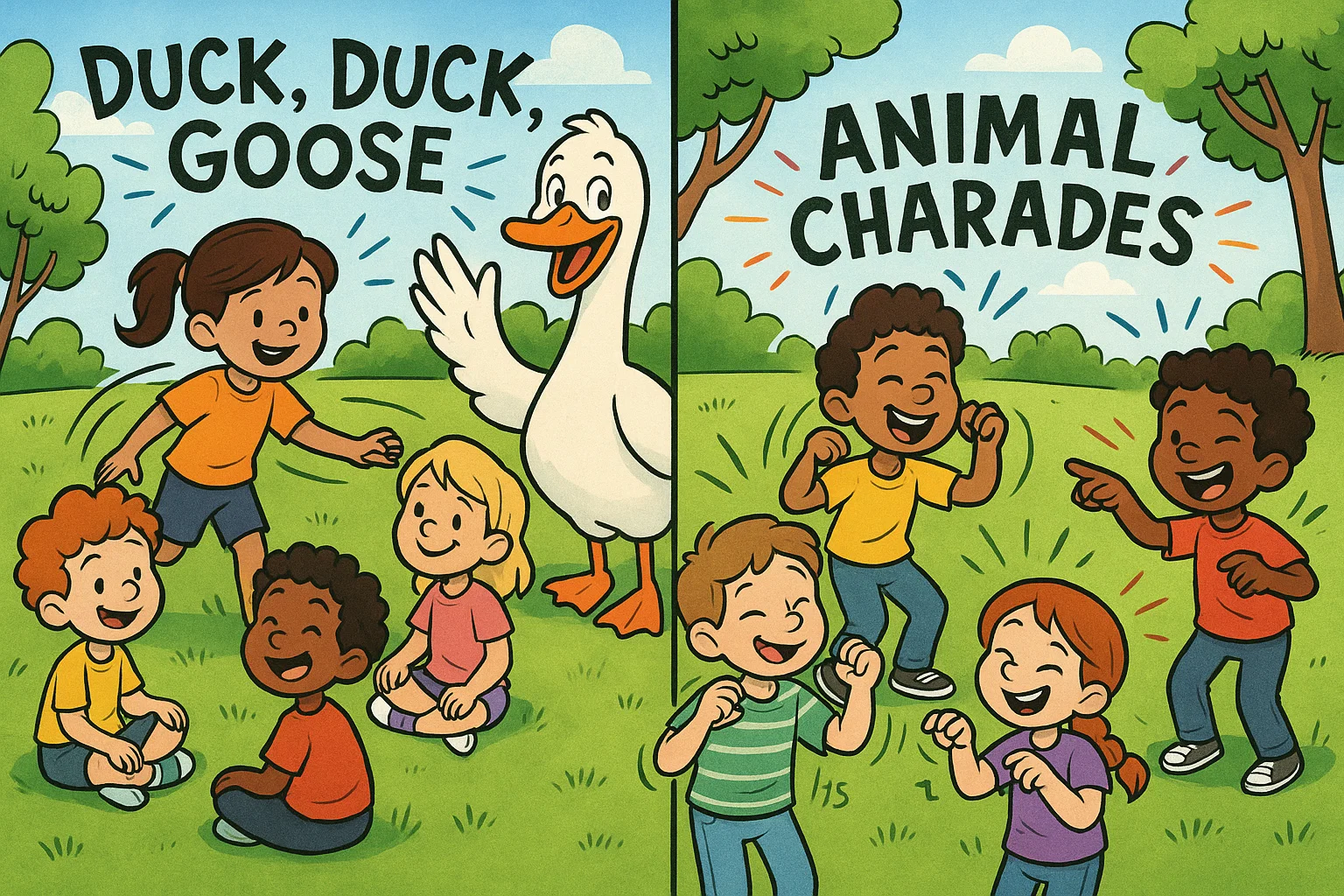
These timeless, classic nature-themed activities have been staples in schools and playgroups for generations. They are easy to learn, require minimal equipment, and are perfect for parties or rainy days at home.
- Duck, Duck, Goose: A simple yet exciting group game that builds anticipation and teaches children to follow rules. Kids sit in a circle, and one “it” person taps each child’s head while saying “duck.” When they choose to say “goose,” the tapped child must chase them around the circle to sit in the empty spot.
- Creature Charades: This is a wonderful game for developing creativity and observation skills. Children take turns acting out a creature, and the others must guess what it is. It’s a fantastic way to practice non-verbal communication and can lead to a lot of laughter and fun as they mimic a gorilla, an eagle, or a caterpillar.
- Run, Rabbit, Run: A classic chasing game that combines fun with exercise. One person is the “fox,” and the others are “rabbits.” The fox stands at one end of the field while the rabbits are at the other. When the fox shouts, “Run, Rabbit, Run!” all the rabbits must race to the other side without being tagged.
- Blindfold Guess: This game sharpens a child’s sensory perception. With a blindfold on, a child has to guess which creature a friend is describing, or even what a toy creature feels like, or what a creature’s sound is, training them to rely on senses other than sight.
Educational Animal Games for Classrooms
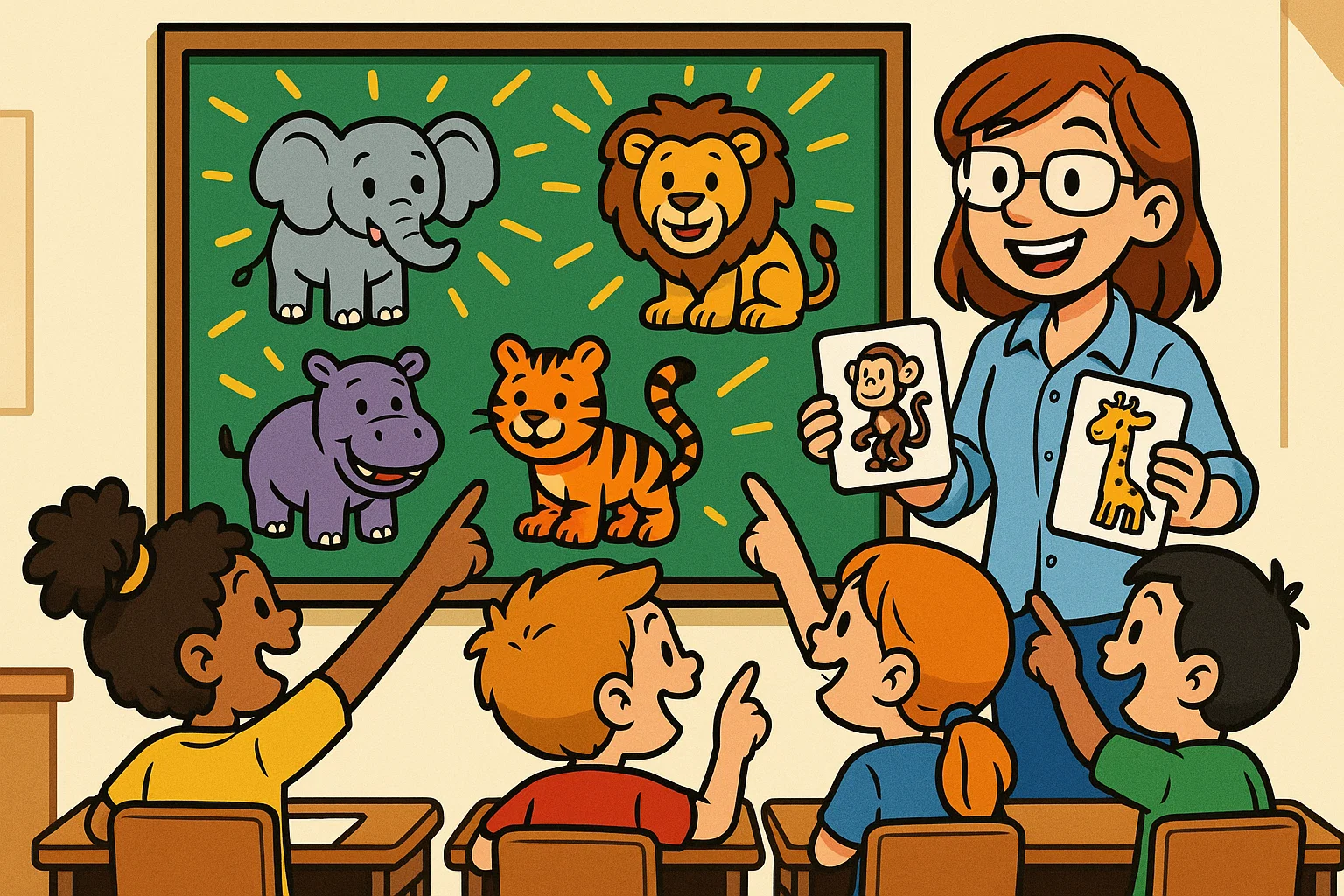
Nature-themed games are invaluable tools for teachers, particularly for preschoolers and ESL lessons. They provide a fun and engaging way to teach new vocabulary, concepts, and communication skills.
- Creature Races: This is a fun way to get children learning and moving. The teacher calls out a creature, and the children have to race to a finish line while mimicking its movements (e.g., “Waddle like a penguin!”). This teaches children to learn about different species and their unique characteristics.
- Hint-a-Creature Game: This is a guessing game perfect for boosting vocabulary. The teacher or a student chooses a creature and gives descriptive hints about it—its habitat, diet type, and physical features—until someone guesses correctly. This is a great way to introduce words like “amphibian,” “reptile,” or “mammal.”
- Lesson plans and songs about creatures: Integrating songs, rhymes, and interactive lesson packs that focus on nature-themed content can enhance language learning. For example, a song about farm animals and the sounds they make helps children learn their names and associated sounds in an informative way. A poem about a butterfly’s life cycle or a frog’s habitat can make complex biological concepts easier to understand.
Creative and Imaginative Animal Games
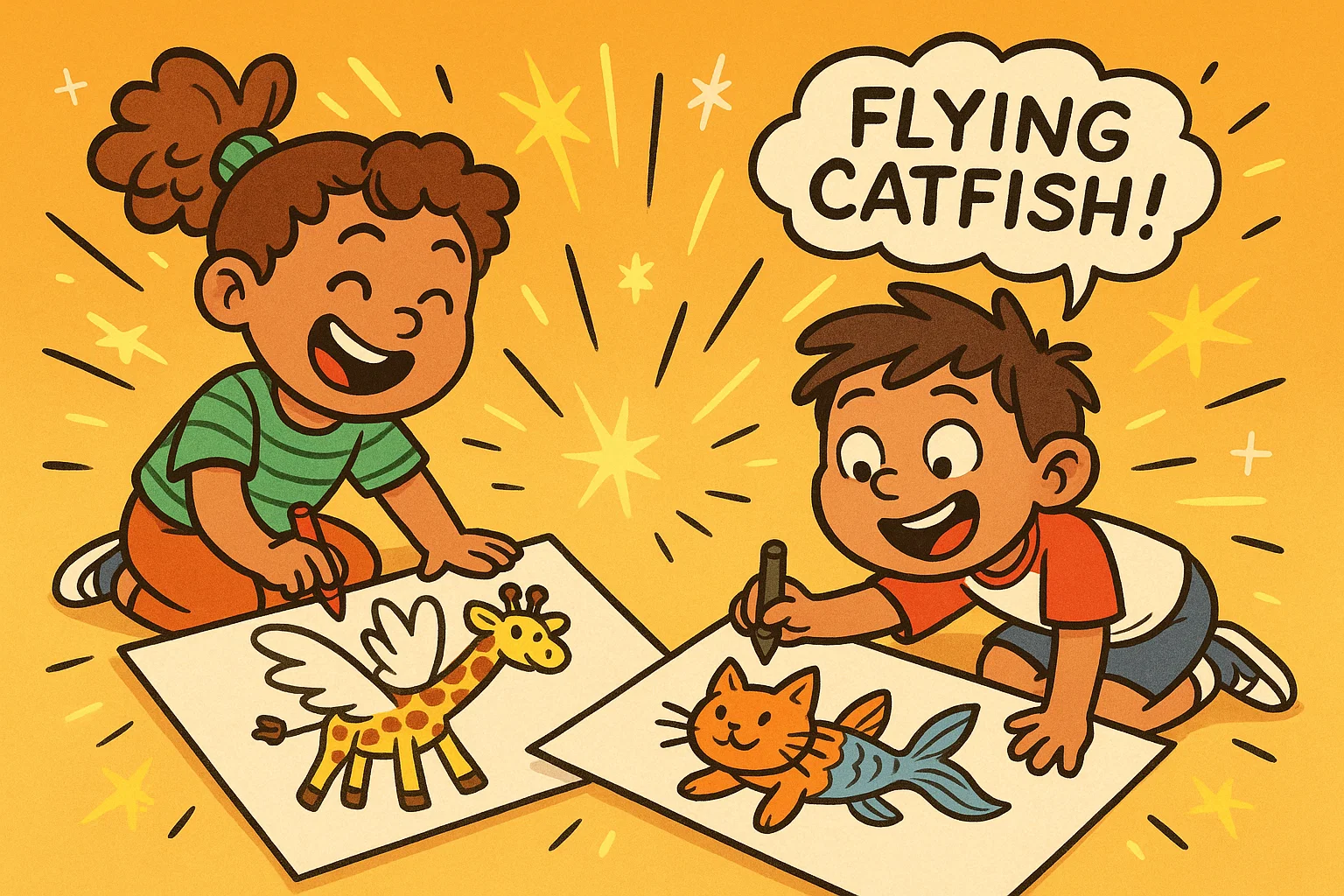
Show how imagination games help kids think outside the box while learning about nature.
- Alphabet Creature Acting: This is a fabulous activity for literacy and fun. Kids act out creatures starting with different letters—great for literacy. This helps them learn the alphabet and reinforces their knowledge of different species.
- Hybrid animals: A creative activity where kids mix traits of two creatures to invent a new one. They can draw their new creature and describe its diet, habitat, and special abilities. This activity fosters imaginative thinking and helps children learn the concept of classification and unique characteristics.
- Rhyming Riddles and Guessing Games: Describe how riddles develop critical thinking and reading skills. A child can create a short rhyming riddle about a common creature for a friend to solve. For instance, “I hop and I nibble on green leaves, and I have long ears. What am I?” This helps children learn creature names and their key features in a fun, interactive way.
Animal Learning Games with Digital Tools
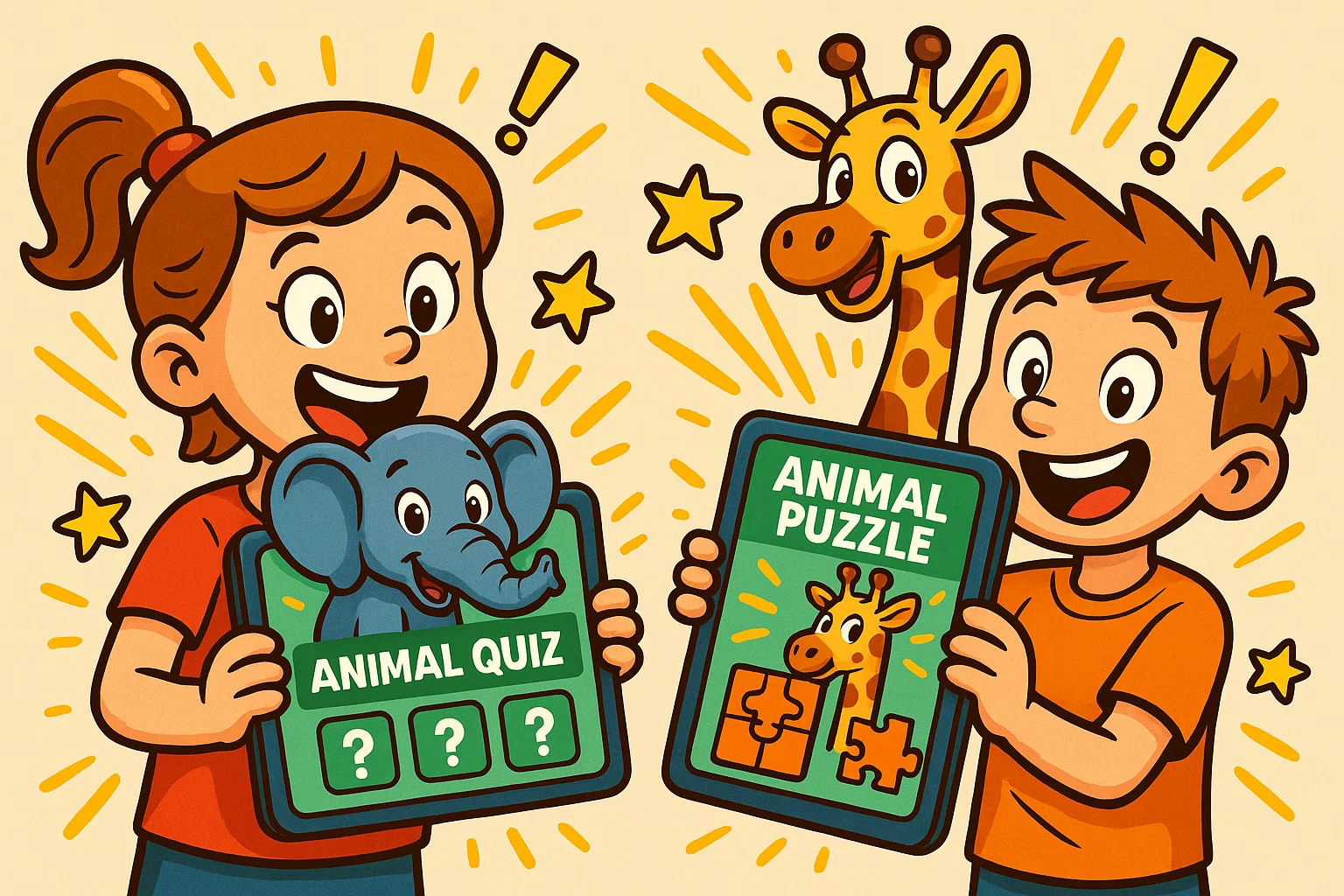
Highlight online apps, platforms, and digital games that support learning about creatures.
- Minecraft Wildlife: The popular sandbox game allows children to learn about farm animals and wildlife in a virtual world. They can build habitats, learn about the needs of different species, and even learn about conservation in a fun, open-ended environment.
- Quiz Apps and Puzzles: Cover mobile and tablet-based quiz games, memory cards, and sorting activities. These apps often feature a collection of creatures, allowing the learner to sort them by habitat, diet type, or other characteristics.
- Learning gadgets: interactive toys and smart devices that make lessons more engaging. Interactive flashcards that talk or a smart globe that identifies different species of wildlife can bring learning to life in a whole new way.
Active and Outdoor Nature Games
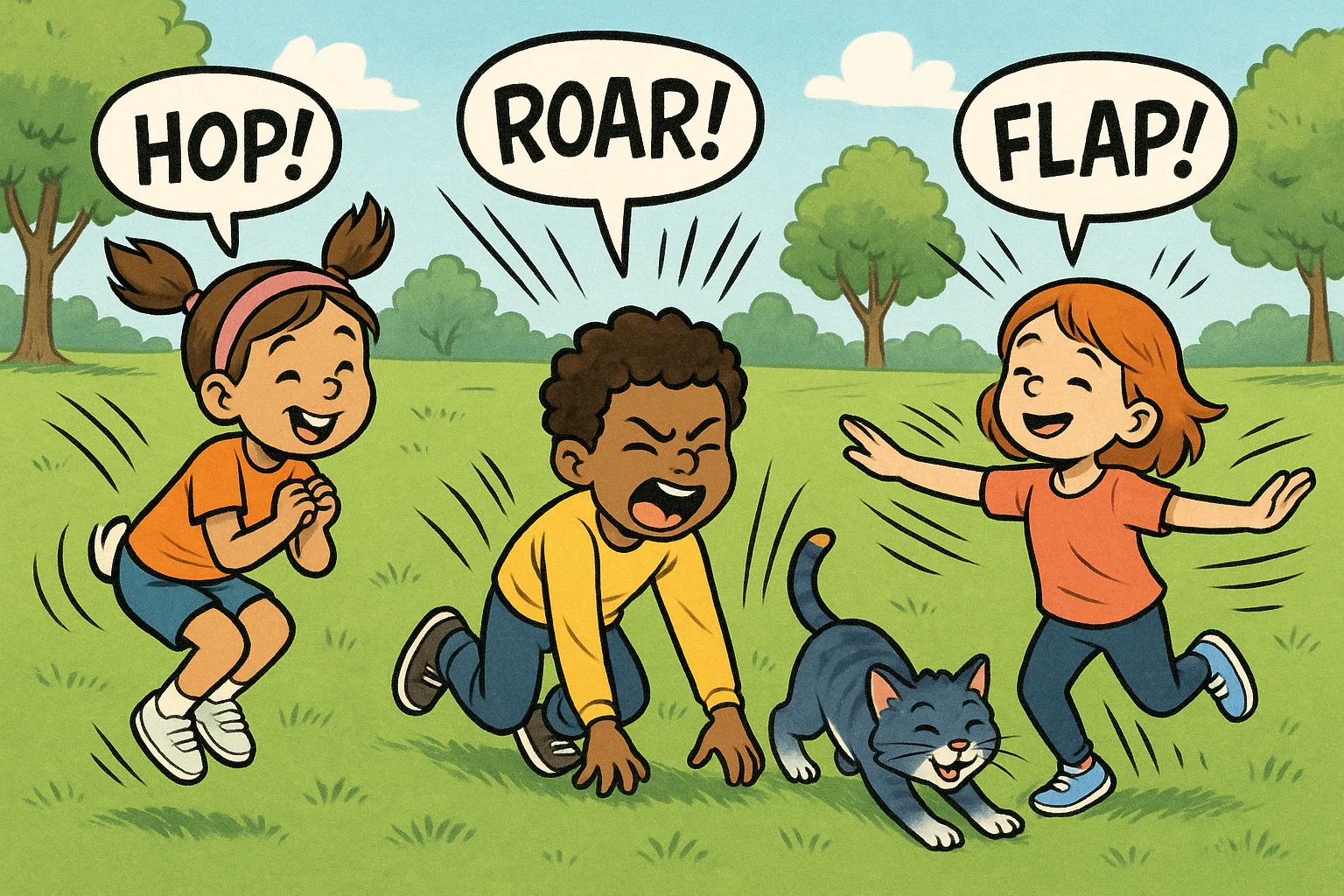
Explain the importance of physical activity games for energy release and coordination.
- Creature Tag: A fun twist on the classic game of tag. Players are assigned different creatures, and when the “it” person calls one out, all players who are that type of creature must run. This game is great for high-energy kids and teaches them about different species in a fast-paced environment.
- Wild Safari: A role-play activity where children act as explorers and creatures. This role-playing activity is perfect for the outdoors. One child can be the safari guide, and the others are explorers. They can look for and “spot” different species (actual or imaginary) and describe what they see. This game sparks the imagination and is a fun way to learn about the savannah, jungle, or any other habitat.
- Build a Home for the Creature: In this activity, children work in teams to forage for materials in their backyard or a park to build a shelter for a toy creature. This teaches them about a creature’s habitat, shelter, and basic needs in a hands-on way.
Animal Learning Games by Age Group
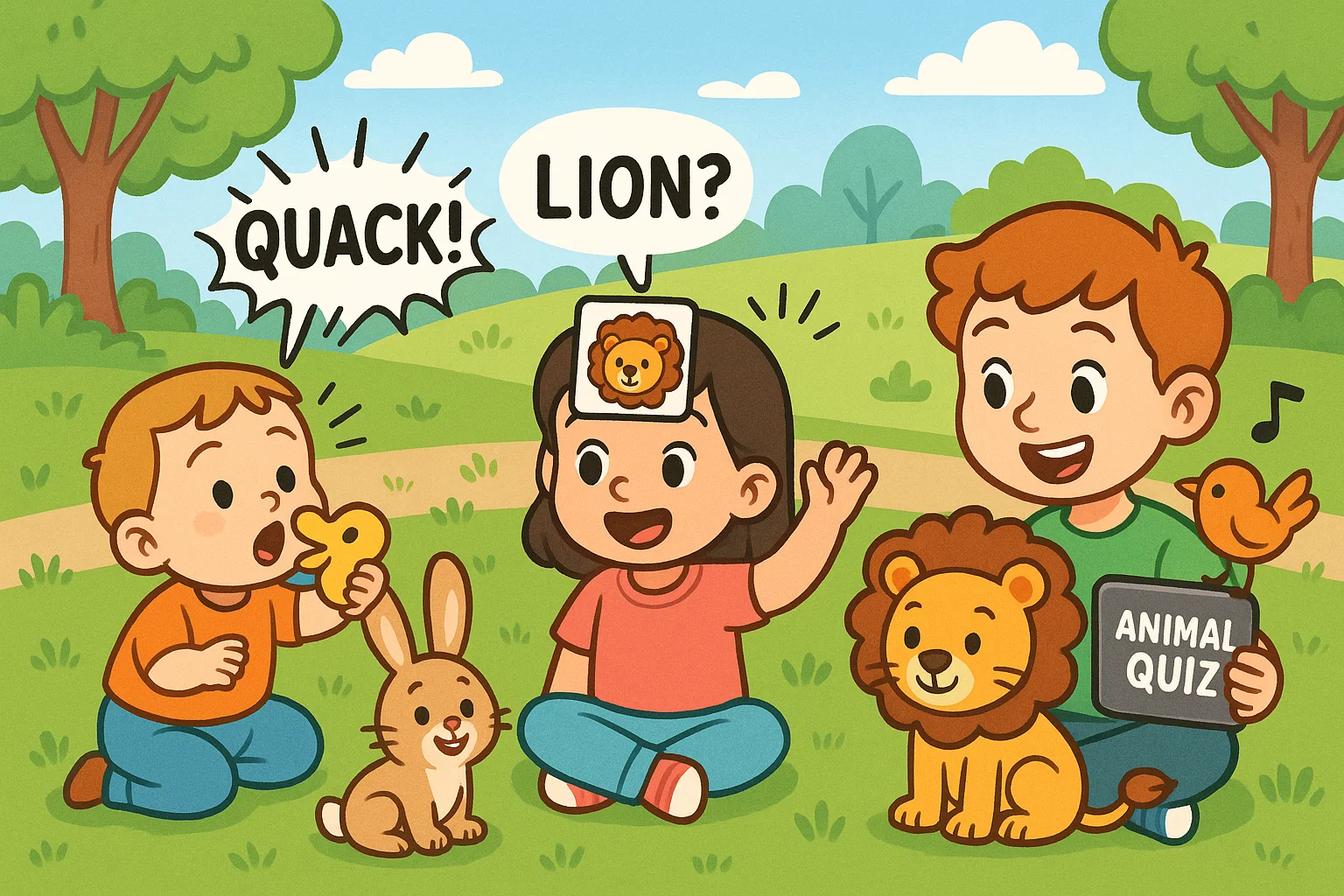
Provide practical recommendations by age category to help parents and teachers choose suitable games.
| Age Group | Recommended Games | Learning Focus |
| Preschoolers (2-5 years) | Simple sound games (e.g., “What does the cow say?”), peek-a-boo with creature faces, simple puzzles. | Sound recognition, creature names, basic motor skills. |
| Early School-Age (5-8 years) | Sorting, quizzes, and active running games. | Classification, new vocabulary, physical coordination. |
| Older Children (8-12 years) | Creative hybrids, digital tools, and knowledge-based riddles. | Critical thinking, creativity, digital literacy, and deeper knowledge. |
Tips for Parents and Teachers
Practical advice for making nature-themed games engaging and educational.
- Choosing the right difficulty level: Always adapt the complexity of the game to the child’s age and skill level. For a younger learner, focus on simple concepts like learning creature names and sounds. For older children, introduce more complex ideas such as classification, conservation, and the relationships between animals and plants in an ecosystem.
- Balancing screen time with active play: While digital tools are great for learning, it’s crucial to balance them with active, outdoor games. Mix an interactive game on a tablet with an afternoon of “Wild Safari” in the backyard. This ensures a well-rounded approach to a child’s development.
- Encouraging empathy and responsibility: Use these games as a way to teach respect for nature and pets. When discussing a particular being, talk about what it needs to be healthy and safe. This can be a great way to introduce concepts of conservation and responsibility, nurturing a child’s emotional intelligence.
Conclusion: Benefits of Animal Learning Games for Kids
In summary, nature-based learning games are a powerful blend of fun with education, helping kids develop memory, creativity, coordination, and empathy. Parents and teachers can leverage a wide range of approaches, from classic games like charades and Duck, Duck, Goose to modern digital tools and apps, to create a balanced and informative learning experience. These activities can be tailored for different age groups, from preschool sound games and puzzles to school-age quizzes and role-play adventures.
Integrating educational nature games into a child’s daily life can make learning feel less like a chore and more like a thrilling adventure. They ignite a child’s natural curiosity about the world, encouraging them to ask questions and seek out new information. By focusing on animals and plants, these games help children build a deep connection to the natural world. In the end, these fun activities are not just games but also powerful tools that build knowledge, empathy, and creativity in children.
FAQ
What are the best games for speech development?
Games involving sounds, role-playing, and riddles. Encouraging a child to mimic the sounds of different species, act out their movements, or describe them in a guessing game helps them practice new words and sounds in a fun and low-pressure environment.
Can these games teach empathy?
Yes, absolutely. Games that involve caring for a make-believe creature, learning about its daily lives, or building a home for it, can nurture emotional intelligence. These activities encourage a child to think about the needs of others and to treat living things with kindness and respect.
Which games help kids learn about habitats?
Safari role-play, quizzes, and building-creature-homes activities. Activities like “Wild Safari,” where children act as explorers, or “Build a Home for the Creature,” where they forage for materials, are perfect for learning about habitats. Additionally, quiz apps and books about animals often include sections on where different species live, from the jungle to the savannah, providing an informative overview of various habitats.
